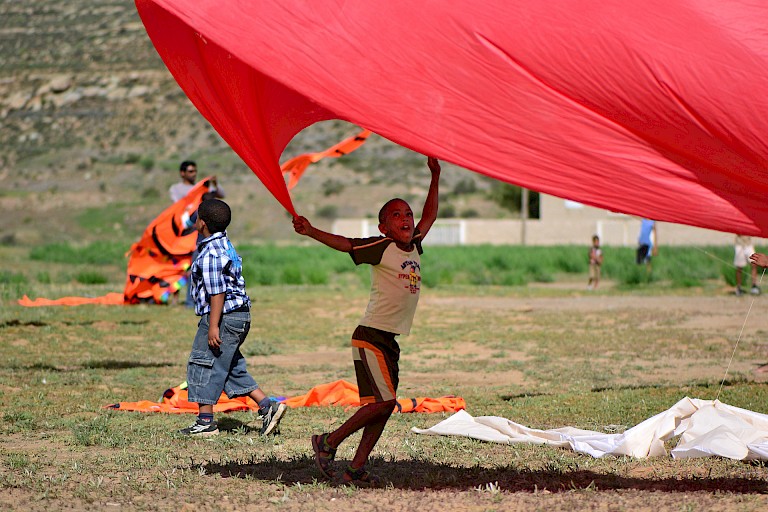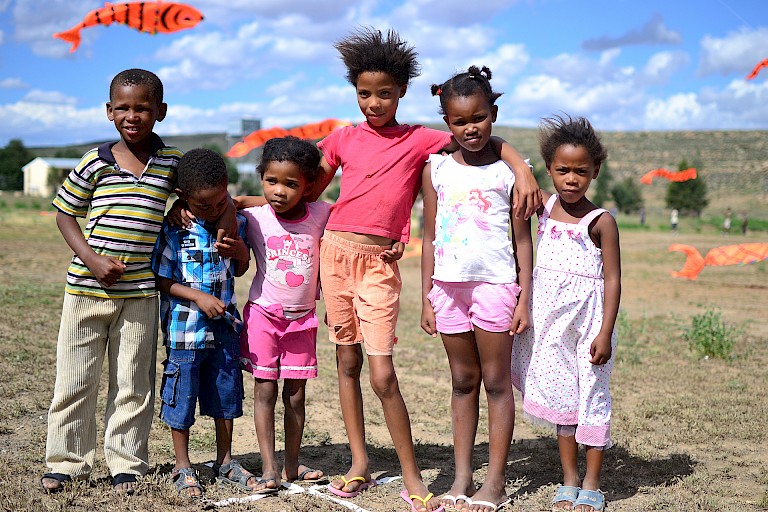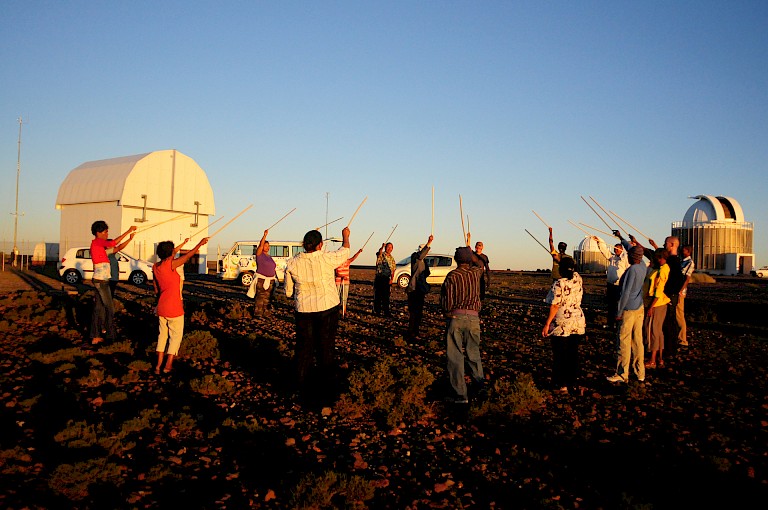



The artists went to Sutherland to explore isolation. On arrival they discovered an indigenous, multiracial remnant from the Apartheid regime. This community still lives the repercussions of missionary practice, colonialism, and Apartheid law that officially ended in 1994.
Though a generation had passed since Apartheid was outlawed, the artists reported that isolation is very difficult for the community. Unemployment, racial strife and substance abuse are rife. Poverty mixed with the heritage of the Apartheid second- and third-rank citizen classification, contrasts sharply with the scientific valuation of the place. Lace and Neustetter developed a work of public art as a series of creative New Year festivals, interventions, and partnerships with a community that urban South Africans believed had disappeared.
Sutherland’s ancestors were the early 'kwe kwe' or bushman people of the Karoo desert. These hunter-gatherers were constantly driven from their traditional lands until the last license for South Africans to legally hunt human bushmen was revoked in 1938.
Lace and Neustetter launched their experimental interventions during the night of New Year's Eve, December 31, 2008, marking the 2009 International Year of Astronomy. Their interventions led to annual engagements with the community resulting in permanent land-art, kite-flying spectacles, museum displays, memorial sites, and activist performances with and by the community through 2012.
Sutherland Reflections aimed to create a community-driven experience. The artists' intention was to address the current attitude and relationship between the disadvantaged communities in Sutherland and the neighboring international telescopic observatory. The artistic interventions closed the gap between these two communities—a distance seemingly as vast as between the earth and the stars.
The project succeeded in realizing the artists’ intention, namely, to explore and impact a group that was disregarded in community improvements and left out of civic and municipal reporting. A human connection arose across a gulf of artists, residents, and the occasional curious astronomer.
The project invokes the early days of the America’s Burning Man festival, which takes place in Nevada’s Black Rock desert, if the organization was just two artists, the festival was on a tribal reservation, and that reservation was surrounded by well-funded scientific facilities who could overlook the local people reifying joy in living life under those clear, close stars.
Sutherland Reflections explores the process of how artists change a place and how a place and project changes artists. The power of art and the presence of artists are lenses for investigation and catalysts for community change and self-reflection. Returning to a place for four years and creating festivals and earthworks, the artists became part of this distant community.
All copyright belongs to Shanghai Academy of Fine Arts, Shanghai University.



